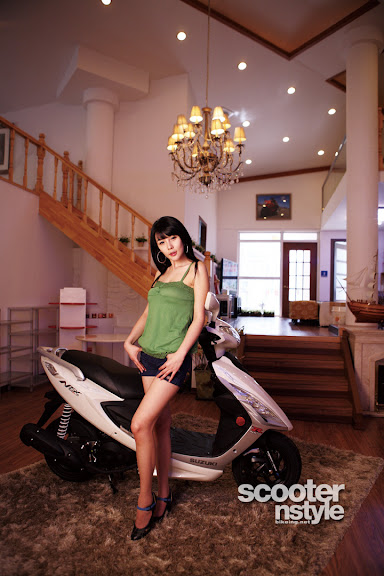Bikini girls - Sexy Girls - Hot Girls - Racing Girls - Hollywood Girls - Bollywood Girls - Korean Girls - Korea Girls - Japanese idol Girls - japanese Gravure Girls - Asia Girls - Cute ( Kute ) Girls - China Girls - Vietnamese Girls - Asia Model....VietLion.Com - Thư viện eBook Download sách điện tử miễn phí online !
Turn back the time: Hwang Mi Hee (황미희)
Some of the rare photos I've never seen before!
These bears have all the luck!
One of the earliest shots on her. Wow! How much she has 'developed' over the years!
Auction business model
Bricks and clicks business model
Collective business models
Component business model
Cutting out the middleman model
Direct sales model
Distribution business models, various
Franchise
Freemium business model
Industrialization of services business model
Low-cost carrier business model
Loyalty business models
Monopolistic business model
Multi-level marketing business model
Network effects business model
Online auction business model
Online content business model
Premium business model
Professional open-source model
Pyramid scheme business model
Razor and blades business model (bait and hook)
Servitization of products business model
Subscription business model
Hình tuyển Korean Girl xinh - VIP only
     MTVvui.com      |
A brief history of the development of business models might run as follows. The most known and most basic business model is the shopkeeper model[citation needed]. This involves setting up a store in a location where potential customers are likely to be and displaying a product or service.
Over the years, business models have become much more sophisticated. The bait and hook business model (also referred to as the "razor and blades business model" or the "tied products business model") was introduced in the early 20th century. This involves offering a basic product at a very low cost, often at a loss (the "bait"), then charging compensatory recurring amounts for refills or associated products or services (the "hook"). Examples include: razor (bait) and blades (hook); cell phones (bait) and air time (hook); computer printers (bait) and ink cartridge refills (hook); and cameras (bait) and prints (hook). An interesting variant of this model is a software developer that gives away its word processor reader free of charge but charges several hundred dollars for its word processor writer.
In the 1950s, new business models came from McDonald's Restaurants and Toyota. In the 1960s, the innovators were Wal-Mart and Hypermarkets. The 1970s saw new business models from FedEx and Toys R Us; the 1980s from Blockbuster, Home Depot, Intel, and Dell Computer; the 1990s from Southwest Airlines, Netflix, eBay, Amazon.com, and Starbucks. Poorly thought out business models were a problem with many dot-coms.
Today, the type of business models might depend on how technology is used. For example, entrepreneurs on the internet have also created entirely new models that depend entirely on existing or emergent technology. Using technology, businesses can reach a large number of customers with minimal costs.
Scooter race queen contestant 2: Lee Ji Woo (이지우)
"The champion and winner for this year(2008) is of course the sexy Lee Ji Woo.... There is nothing I can say that others in Korea already don't know about her. She was voted hottest race queen by coordinators, managers, and staff. She is the recipient of MP's Event Model of The Year. She has been working her ass of this year and well she is just amazing... I love everything about her..the chilly willy face to the amazing body and did you ever see her wear a white tank???? Freaken ridiculous I tell you... Congrats LJW for you are my countdown winner... One day I will meet you and hear the words Oppa from you...I think I might just die..."





The ultimate whole package of a woman; waiting for you.















The Proto-Three Kingdoms period, sometimes called the Several States Period, is the earlier part of what is commonly called the Three Kingdoms Period, following the fall of Gojoseon but before Goguryeo, Baekje, and Silla fully developed into kingdoms.
This time period saw numerous states spring up from the former territories of Gojoseon. Buyeo arose in today's North Korea and southern Manchuria, from about the 2nd century BCE to 494. Its remnants were absorbed by Goguryeo in 494, and both Goguryeo and Baekje, two of the Three Kingdoms of Korea, considered themselves its successor. Okjeo and Dongye of northern Korea were eventually absorbed into the growing Goguryeo.
Located in the southern part of the Korean Peninsula, Samhan refers to the three confederacies of Mahan, Jinhan, and Byeonhan. Mahan was the largest and consisted of 54 states. Byeonhan and Jinhan both consisted of twelve states, bringing a total of 78 states within the Samhan. These three confederacies eventually developed into Baekje, Silla, and Gaya.





The ultimate whole package of a woman; waiting for you.















The Proto-Three Kingdoms period, sometimes called the Several States Period, is the earlier part of what is commonly called the Three Kingdoms Period, following the fall of Gojoseon but before Goguryeo, Baekje, and Silla fully developed into kingdoms.
This time period saw numerous states spring up from the former territories of Gojoseon. Buyeo arose in today's North Korea and southern Manchuria, from about the 2nd century BCE to 494. Its remnants were absorbed by Goguryeo in 494, and both Goguryeo and Baekje, two of the Three Kingdoms of Korea, considered themselves its successor. Okjeo and Dongye of northern Korea were eventually absorbed into the growing Goguryeo.
Located in the southern part of the Korean Peninsula, Samhan refers to the three confederacies of Mahan, Jinhan, and Byeonhan. Mahan was the largest and consisted of 54 states. Byeonhan and Jinhan both consisted of twelve states, bringing a total of 78 states within the Samhan. These three confederacies eventually developed into Baekje, Silla, and Gaya.
Subscribe to:
Comments (Atom)





























